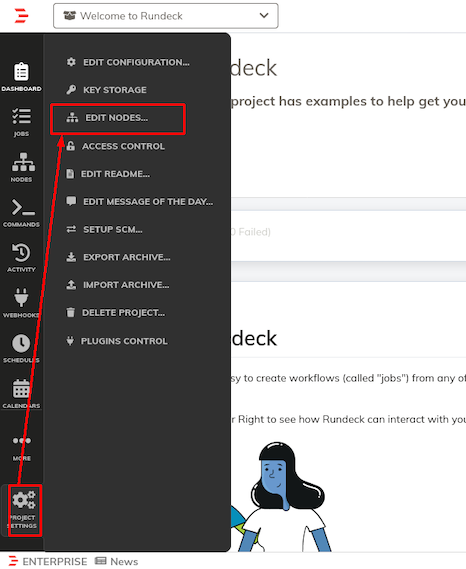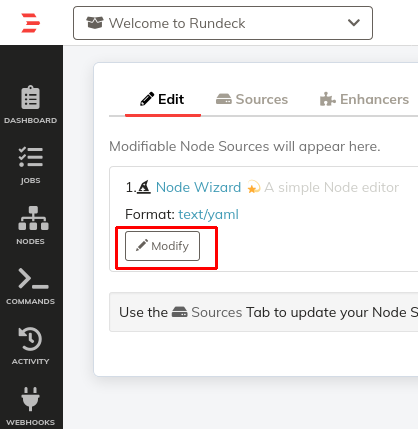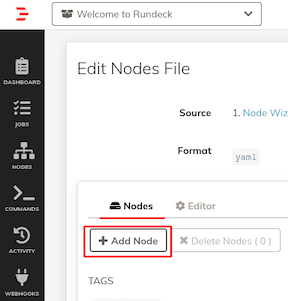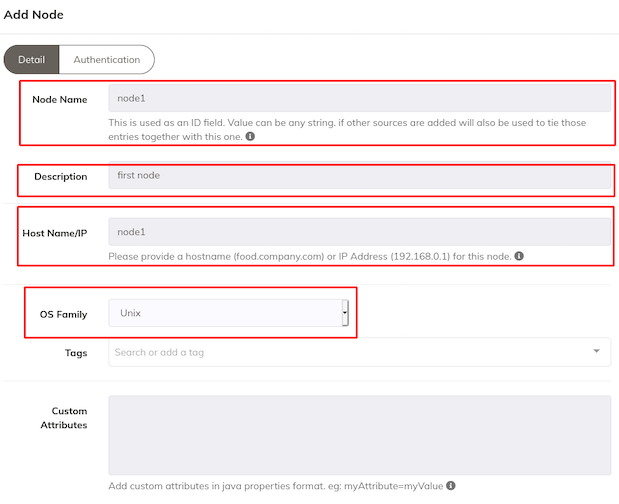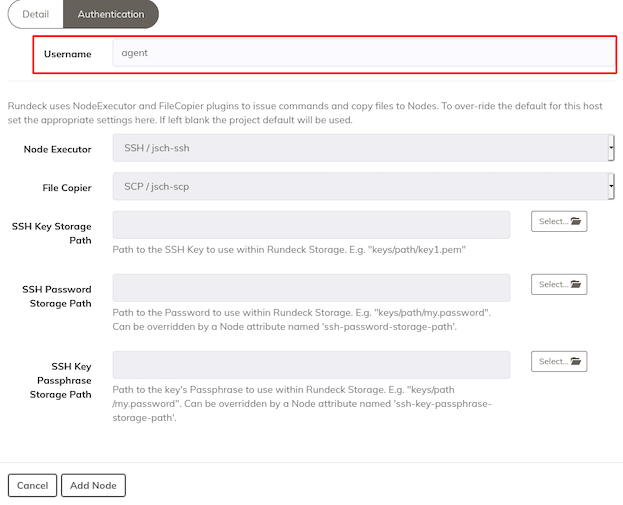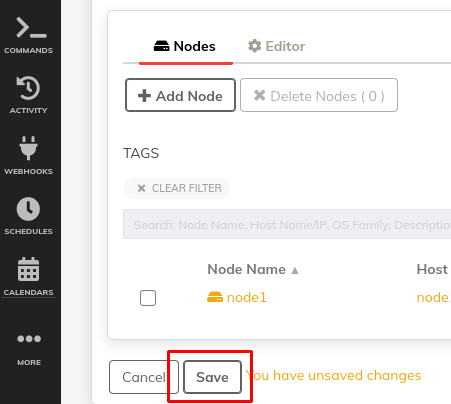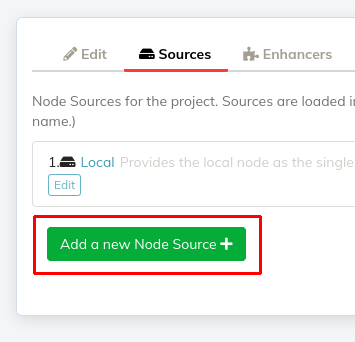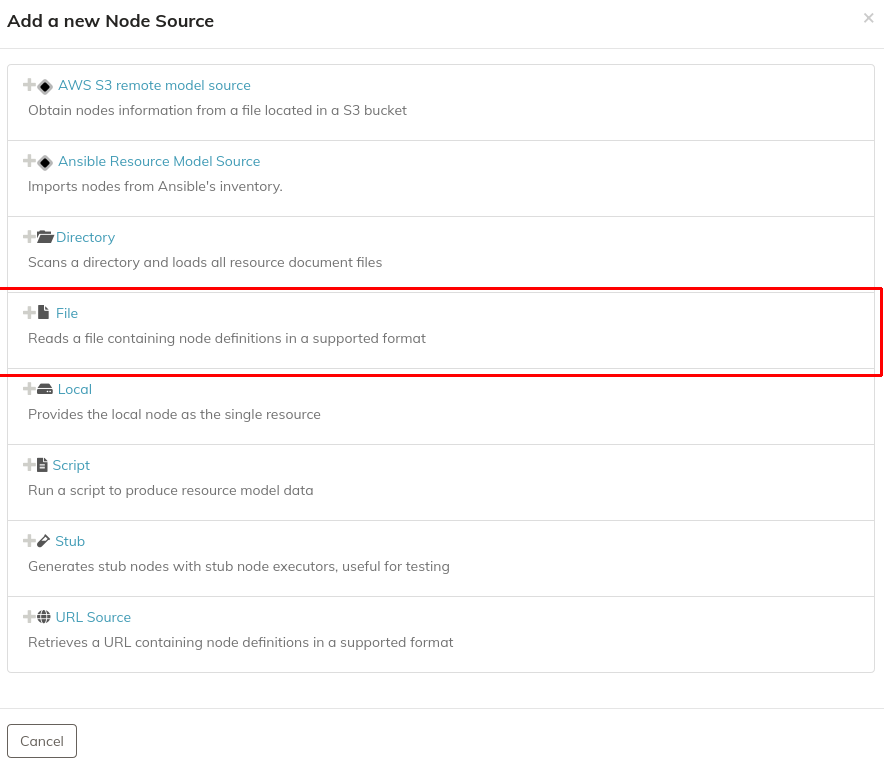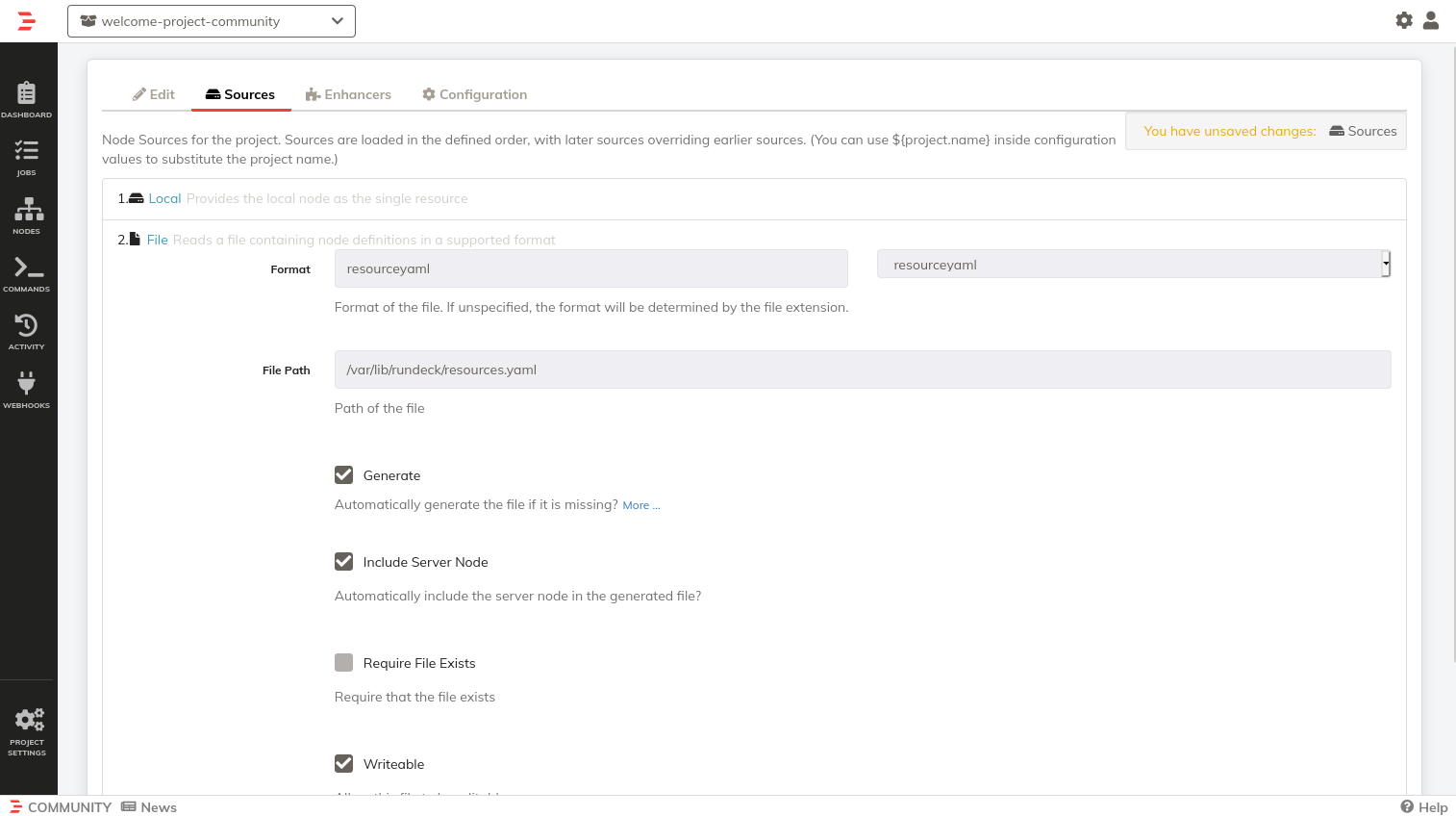# Using SSH on Linux/Unix Nodes
Rundeck allows users to dispatch jobs to remote Linux/UNIX servers to manage and automate any task using Rundeck workflows. The most common protocol for connecting to Linux/Unix servers is SSH. This is an example of how to add a remote node and configure Rundeck to use SSH to connect to it.
Note: If this is the first time adding remote nodes. It is suggested to review the Rundeck Tutorial before adding remote SSH nodes. This exercise assumes some experience with Linux, SSH Keys, and Rundeck basics covered in the Tutorial.
# Generating Keys
First, the SSH remote node must be configured so that it can be accessed using SSH Keys. Login to the remote node’s console and execute the ssh-keygen command.
$ ssh-keygen
By default, a key pair is generated in the following path /home/USERNAME/.ssh.
To allow the Rundeck server to access this Remote Node we will add the public key of our Rundeck instance to the /home/USERNAME/.ssh/authorized_keys file on the remote SSH node.
The key can be found in the following path:/home/rundeck/.ssh/id_rsa.pub
Note: On RPM/DEB based installations, this key can be found at /var/lib/rundeck/.ssh/id_rsa.pub path. For WAR-based installations, add the public key content of a previously key pair created with ssh-keygen -m PEM command on the remote authorized_keys file (/home/USERNAME/.ssh/authorized_keys).
# Configuring Rundeck
Rundeck can store the authentication keys necessary to authenticate to our Linux example host in Rundeck’s built-in Key Storage.
- Click on the System Menu (gear icon) and choose Key Storage.
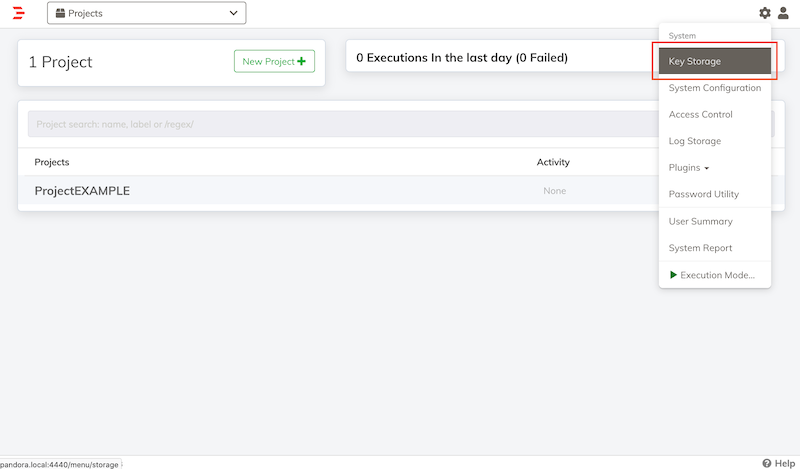
- Click on the Add or Upload a Key button to create a New entry in the Rundeck Key Storage.
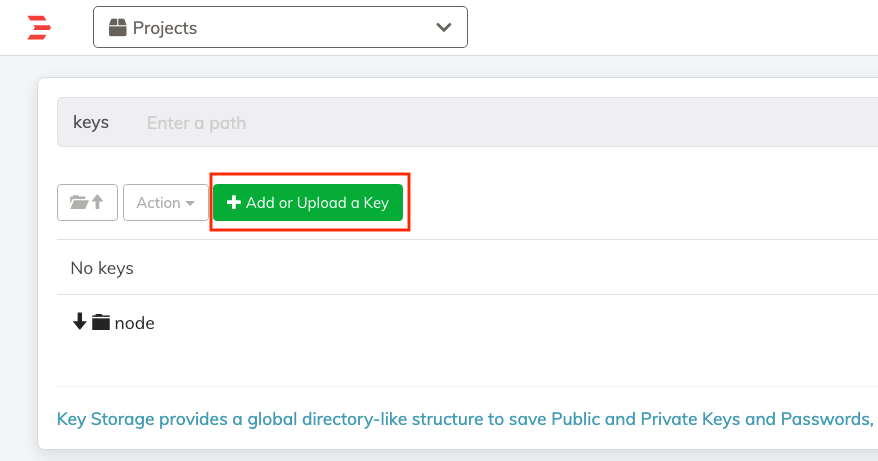
- For Key Type select
Private Key. - Add Rundeck instance private key file content in Enter text. The key is located at
/var/lib/rundeck/.ssh/id_rsa. - In the Storage path field it’s possible to define specific subfolders for the keys if needed, for this example just leave it blank.
- In the Name textbox enter a key name that corresponds to the Rundeck host, in this example is just
rundeck(now the Key Storage entry iskeys/rundeck).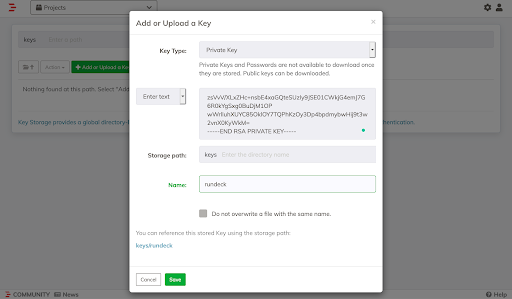
# Adding Nodes
Now, it’s time to add the remote node.
# Running Commands on Nodes
Let’s dispatch some commands!
- Clicking on the "Nodes" tab (left menu) and using the drop-down to choose Select All Nodes will display all the nodes that have been configured. The screenshot below shows the listing with 2 nodes (the Rundeck node and the node added recently).
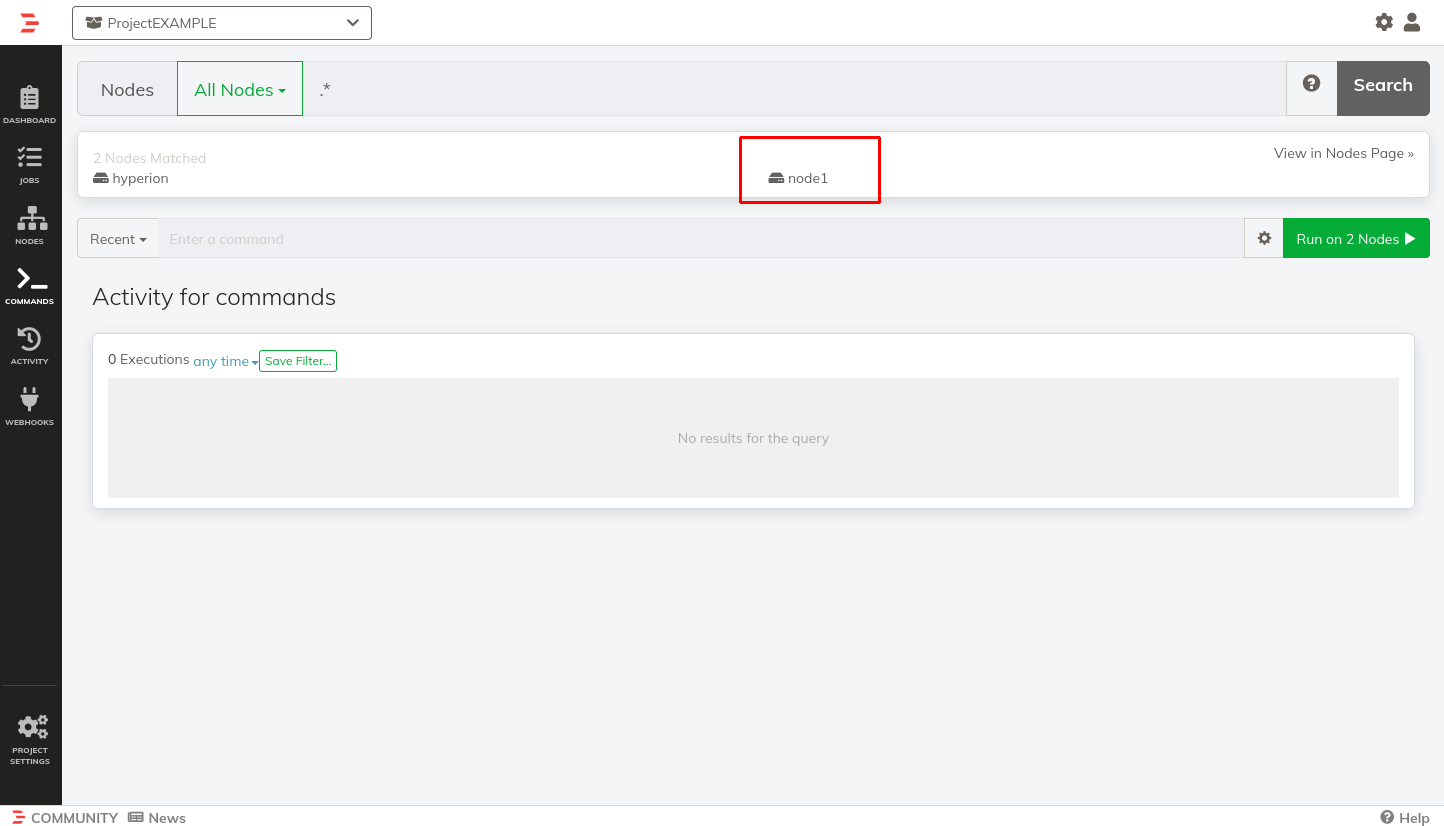
- To select the node created earlier, put the name in Nodes textbox; In this case,
node1and press Enter key, now the node is selected.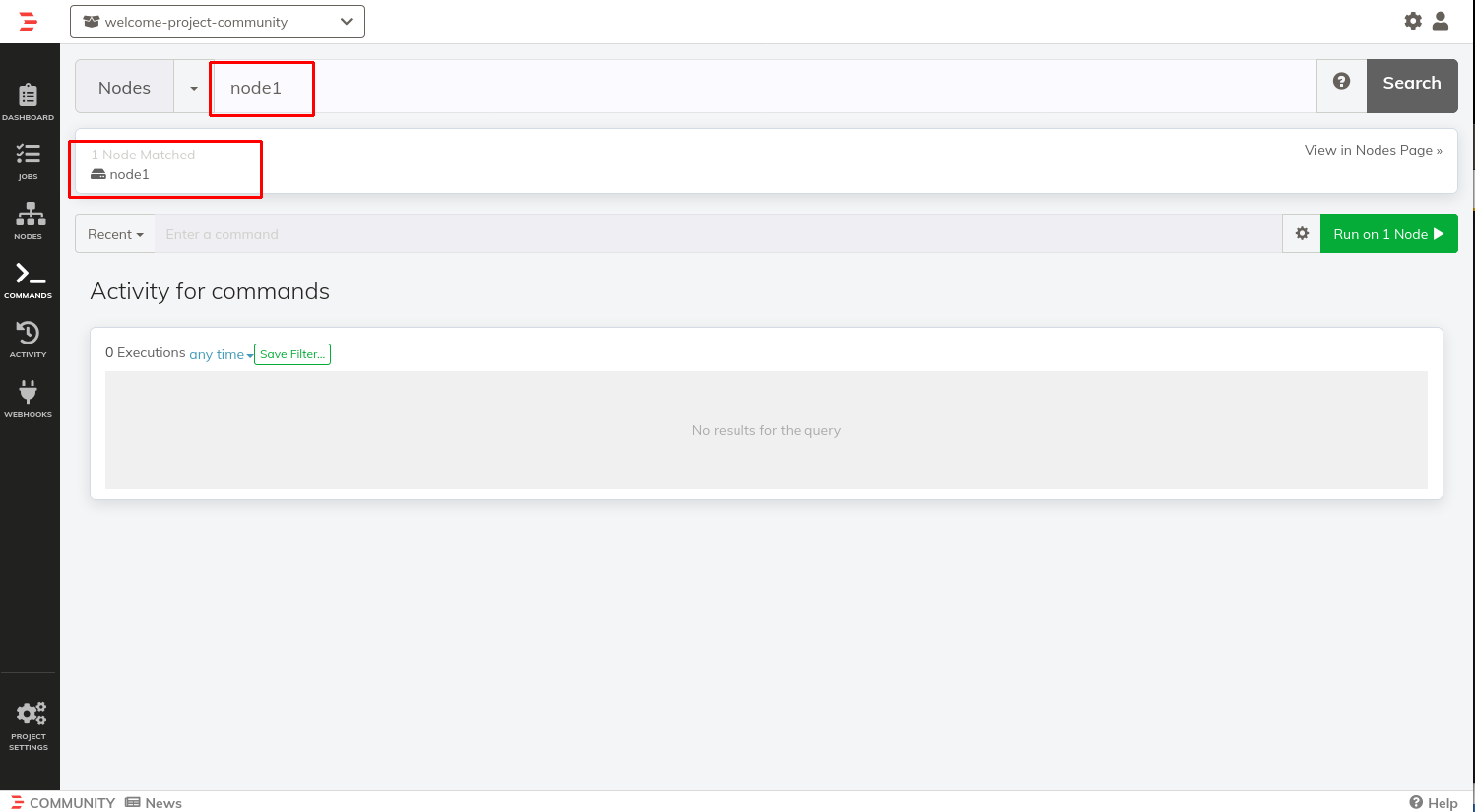
- In the Enter a command textbox put a command, e.g.:
df, and click on the Run on 1 Node green button.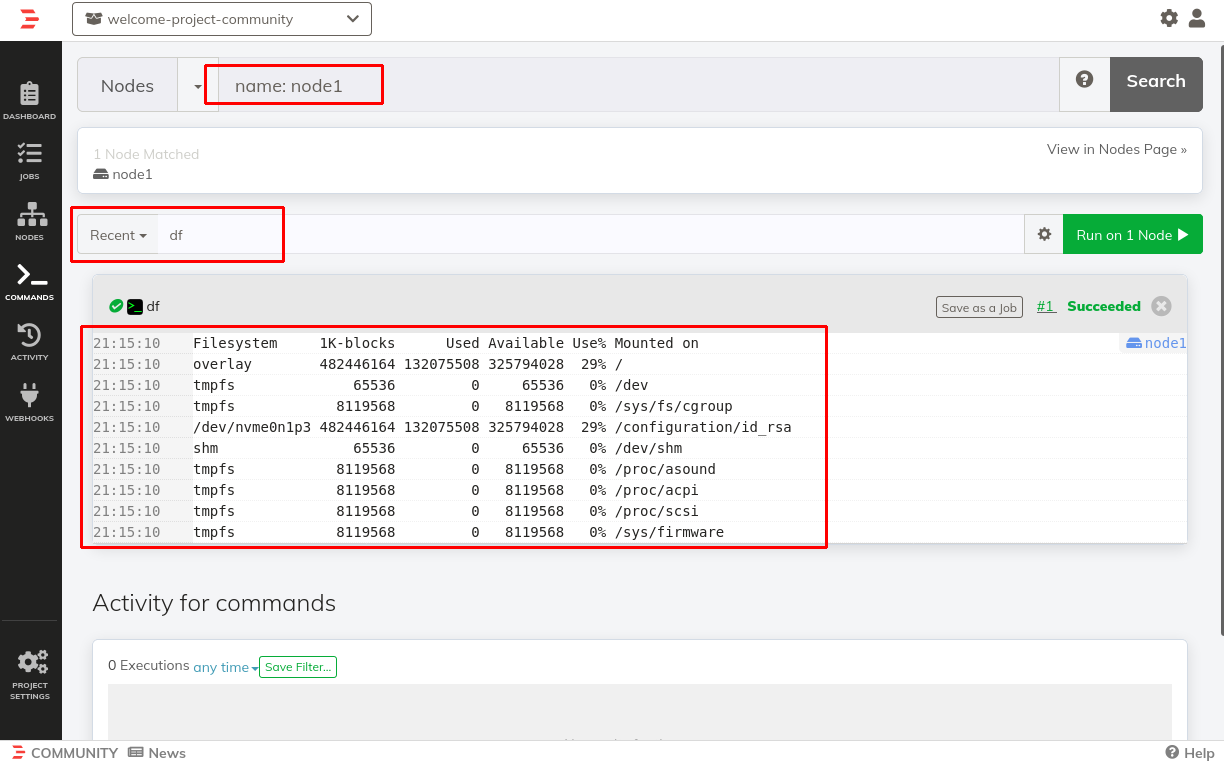
Congratulations! A remote SSH node to dispatch commands and jobs is setup in Rundeck. Stay tuned to the next blog entry where we build a job to execute on this Node.
